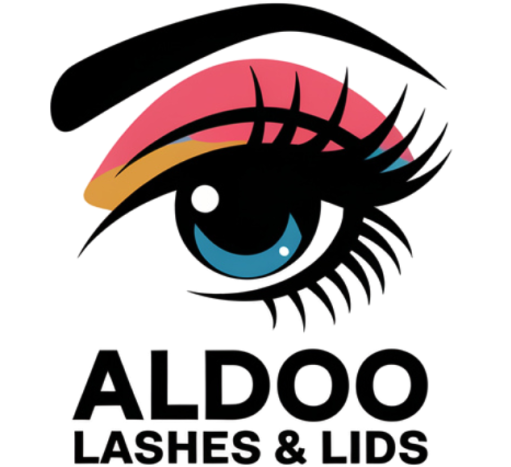How Long Does an Eye Exam Take
How Long Does an Eye Exam Take?

Overview of Eye Exams
Eye exams are an essential part of maintaining good eye health. They can detect eye problems early, before they cause vision loss or other complications.
In general, a comprehensive eye exam takes about 20 to 60 minutes, but there are certain factors that can keep you at an optometrist’s office for longer.
During an eye exam, your optometrist will check your vision and eye health. They will ask you about your medical history and any medications you are taking.
They will also perform a series of tests to evaluate your eyes and vision.
These tests may include:
- Visual acuity tests: These tests measure how well you can see at different distances. They are usually done using an eye chart.
- Refraction tests: These tests determine your eyeglass prescription.
- Eye movement tests: These tests evaluate how well your eyes move and work together.
- Eye pressure tests: These tests measure the pressure inside your eyes and can detect glaucoma.
- Dilated eye exams: These exams involve putting drops in your eyes to dilate your pupils. This allows your optometrist to see the back of your eye more clearly and check for eye diseases.
It is recommended that adults get a complete eye examination at age 40, and then every 2-4 years after that, depending on their risk for eye disease.
However, if you have a family history of eye disease, diabetes, high blood pressure, or other health conditions, you may need to have your eyes checked more often.
Pre-Exam Preparation
Before going for an eye exam, there are a few things you should do to prepare yourself. Here are some suggestions to help you get ready for your appointment.
Scheduling and Expectations
When scheduling your eye exam, make sure to ask how long the appointment will take.
On average, an eye exam takes about 30 minutes to an hour, but this can vary depending on the complexity of the exam and the tests that are performed.
Knowing how long the appointment will take will help you plan your day accordingly.
It is also important to have realistic expectations. While an eye exam is an important part of maintaining your eye health, it is not a quick process. Be prepared to spend some time at the eye doctor’s office.
You may also need to return for follow-up appointments or additional testing, depending on the results of your exam.
What to Bring
When going for an eye exam, make sure to bring your current eyeglasses or contact lenses with you. This will allow your eye doctor to check your prescription and make any necessary adjustments.
If you are a new patient, bring a list of any medications you are currently taking, as well as your medical history.
It is also a good idea to bring your insurance information with you.
Some eye exams may be covered by your insurance, so it is important to have your information on hand to ensure that you receive the appropriate coverage.
In addition to these items, you may also want to bring a book or some other form of entertainment to pass the time while you wait.
Eye exams can sometimes involve a lot of waiting, so having something to keep you occupied can make the experience more pleasant.
During the Eye Exam
When you arrive at your eye exam, the optometrist or ophthalmologist will first perform some initial assessments to get a baseline understanding of your eye health. These assessments may include taking your medical history, measuring your visual acuity, and checking your eye pressure.
Initial Assessments
Taking your medical history will help the eye doctor understand your overall health and any medical conditions that may affect your eyesight.
The doctor will ask you about any medications you are taking, as well as any previous eye surgeries or conditions such as glaucoma or cataracts.
Measuring your visual acuity is a standard part of an eye exam. The doctor will ask you to read letters or symbols from an eye chart to determine how well you can see at various distances.
This test will help the doctor determine if you need glasses or contact lenses.
Checking your eye pressure is important for detecting glaucoma. The doctor will use a device called a tonometer to measure the pressure inside your eye.
If the pressure is too high, it can damage your optic nerve and lead to vision loss.
Vision Testing
After the initial assessments, the eye doctor will perform a series of vision tests to evaluate your eyesight. These tests may include:
- Refraction: This test determines your exact prescription for glasses or contact lenses.
- Color vision: This test checks your ability to distinguish between different colors.
- Depth perception: This test measures your ability to perceive depth and distance.
- Visual field: This test evaluates your peripheral vision.
Health Evaluation
The final part of the eye exam is a health evaluation. The doctor will use a special instrument called an ophthalmoscope to examine the inside of your eye, including the retina and optic nerve.
This can help detect conditions such as macular degeneration, diabetic retinopathy, and other eye diseases.
Post-Exam Procedures
After your eye exam, your optometrist or ophthalmologist will discuss the results with you. This discussion will involve an explanation of any issues found during the exam and recommendations for next steps. Here are the two main subsections that will be covered in this discussion:
Discussion of Results
During this part of the discussion, your eye doctor will go over the results of the various tests that were conducted during your eye exam.
This may include information on your visual acuity, refraction, eye muscle movement, visual field, and color vision.
Your doctor will explain what each of these tests measures and what the results mean for your eye health.
If any issues were found during the exam, your doctor will discuss these with you and explain the implications of these issues for your vision and eye health.
Your doctor may also discuss treatment options with you if any issues require further attention.
Recommendations and Next Steps
Based on the results of your eye exam, your doctor may make recommendations for next steps.
This may include scheduling a follow-up appointment for further testing or treatment, or simply continuing to monitor your eye health through regular exams.
Your doctor may also provide recommendations for lifestyle changes or adjustments to your eyeglasses or contact lenses, if necessary.
They may also discuss any medications or treatments that may be necessary to address any issues found during the exam.
Factors Affecting Exam Duration
When it comes to eye exams, there are several factors that can affect how long the exam will take. Understanding these factors can help you better prepare for your appointment and ensure that you get the most out of your visit.
Type of Exam
The type of eye exam you receive will play a significant role in how long the exam takes.
A routine eye exam with an optometrist you’ve seen before might take as little as 30 minutes. However, a comprehensive eye exam that includes a full evaluation of your eye health could take up to an hour or more.
Patient Age and Health
Your age and overall health can also impact how long your eye exam will take.
As you get older, your risk for certain eye conditions increases. This means that older patients may require more extensive testing and evaluation, which can add time to the exam.
Additionally, if you have any existing eye conditions or medical issues that affect your eyes, your exam may take longer than usual.
Technological Advancements
Advancements in eye care technology have made it possible to conduct more comprehensive eye exams in less time.
For example, digital retinal imaging allows eye care professionals to quickly and accurately assess the health of your retina.
Similarly, automated visual field testing can help detect early signs of glaucoma in a matter of minutes.
These technological advancements can help streamline the exam process and reduce the amount of time you spend in the exam room.
Frequently Asked Questions
What is the typical duration of an eye exam at major retailers like Walmart or LensCrafters?
The typical duration of an eye exam at major retailers like Walmart or LensCrafters is about 20-60 minutes on average. However, the duration may vary depending on the type of exam and any additional tests that may be required.
After completing an eye exam, how much time does it typically take to receive prescription glasses?
After completing an eye exam, it typically takes about 7-10 business days to receive prescription glasses. However, some retailers may offer expedited services for an additional fee.
What is the expected time frame for an eye examination when getting fitted for contact lenses?
When getting fitted for contact lenses, the expected time frame for an eye examination is typically longer than a regular eye exam. It can take anywhere from 30 minutes to an hour, depending on the type of contact lenses and any additional tests that may be required.
For how long are the results of an eye exam considered valid?
The results of an eye exam are generally considered valid for about one year. However, it is recommended that you have your eyes checked annually to ensure that your prescription is up-to-date and to detect any potential eye problems early on.
Is it safe to drive immediately following an eye examination, and if not, how long should one wait?
It is generally safe to drive immediately following an eye examination. However, if your eyes were dilated during the exam, you may experience temporary blurred vision and light sensitivity, which can affect your ability to drive safely.
It is recommended that you wait at least 2-3 hours after your eyes have been dilated before driving.
What additional time should be anticipated if an eye exam includes pupil dilation?
If an eye exam includes pupil dilation, you should anticipate an additional 1-2 hours for the dilation to wear off before your vision returns to normal.
During this time, you may experience temporary blurred vision and light sensitivity. These can affect your ability to perform certain tasks.
It is recommended that you bring a pair of sunglasses with you to wear after your exam to help reduce discomfort from bright lights.






